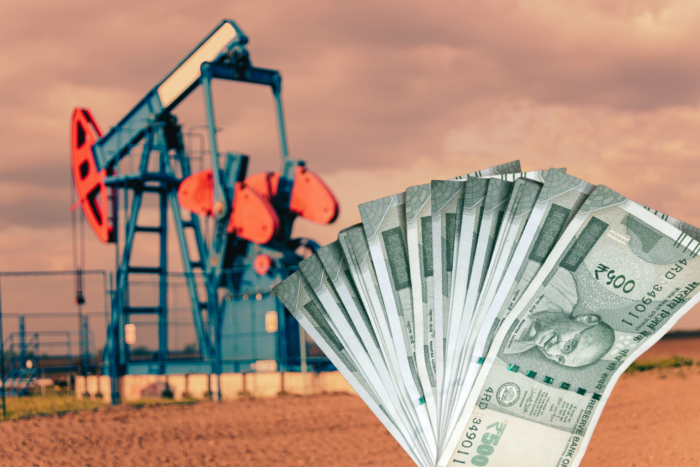Clean energy subsidies accounted for less than 10% of total energy subsidies in 2023, while coal, oil, and gas subsidies contributed around 40%, says the report
New research by the International Institute for Sustainable Development (IISD) found that India’s total energy subsidies reached a nine-year high of ₹3.2 lakh crore ($39.3 billion) for the fiscal year ending 2023. The 2022 global energy crisis, together with India’s growing energy demand, has led the country to adopt a hybrid approach, expanding all forms of supply in 2023.
In 2023, like many countries, rising energy demands and the impact of the international energy price crisis following Russia’s invasion of Ukraine led India to put several measures in place that significantly increased support for fossil fuels. With an aim to protect low-income households, India responded to peaking fossil fuel prices in 2022-2023 by capping retail prices of petrol, diesel, and domestic liquefied petroleum gas; cutting taxes; providing direct budgetary transfers to businesses and consumers; and supporting existing energy supplies. As a result, oil and gas subsidies rose by 63% in 2023 compared to 2022.
Fossil fuel subsidies trend in India
The report said that clean energy subsidies accounted for less than 10% of total energy subsidies in 2023, while coal, oil, and gas subsidies contributed around 40%. The majority of the remaining subsidies were for electricity consumption, particularly in agriculture. Subsidies for coal also rose by 17% over the same period. Altogether, fossil fuel subsidies were five times greater than clean energy subsidies.
According to the report, the government provided significant support to the oil and gas sector through direct budgetary transfers to state-owned oil marketing companies (OMCs) in 2023. During this period, total oil and gas subsidies rose to at least ₹70,692 crore ($ 8.8 billion), a 63% increase from 2022. Over the last decade, the nature of oil and gas subsidies provided has shifted from substantial consumer price support for petrol and diesel (until 2015) to domestic LPG in 2023.
The report said that the government also provides support to the oil and gas sector through tax expenditures that tend to be less visible but were quantified as a part of this study. A large part of these tax expenditures also went to domestic LPG consumers through lower goods and services tax (GST) rates and custom duty exemptions on imported LPG for domestic use (see interactive database for details). India also continues to provide a full custom duty exemption on import of crude oil to promote its refining sector. Although identified, this measure has not been quantified in the current estimates.
Moreover, the government plans to spend another ₹628 crore ($78 million) toward capacity addition to India’s strategic petroleum reserves along with capital support of ₹15,000 crore ($ 1.9 billion) to OMCs in 2025. Based on media reports, the government is still considering the mechanism for providing this capital support.
Rapid economic growth, on course to drive India to become a $5 trillion economy by 2027, means that the government is investing in all forms of energy supply. In 2023, both clean energy and fossil fuel subsidies grew by around 40%.
“While fossil fuel subsidies have reduced by 59% since their peak in 2013-2014, without further targeting and a return to a market-based pricing regime, they could mount again, resulting in budgetary impacts. This is undesirable, as untargeted fossil fuel subsidies are an inefficient way of supporting low-income households, and they shrink the fiscal space available for supporting clean energy technologies,” said co-author of the report Swasti Raizada, policy advisor at IISD.
“The current approach not only perpetuates dependence on price-volatile and geopolitically risky fossil fuels but also delays India’s own clean energy goals for 2030. Clean energy solutions can instead deliver sustainable economic growth and reinstate India’s global climate leadership as an agenda-setting country with a practical vision for eliminating pollution and meeting essential climate goals, ” Raizada added.
The report recommended that the government could consider earmarking a portion of its fossil fuel tax revenues to support its emerging just transition needs.
Deepak Sharma, policy analyst at the IISD, said, “Previous studies show that India will require significant investment to make its energy transition just, sustainable, and inclusive. India’s state-owned enterprises will be a critical part of this shift. As their majority shareholder, the government should ensure that all fresh capital going to these entities is linked to India’s net zero commitments.”
About The Author
You may also like
India to Expand Coal Power Capacity Until 2047 to Ensure Grid Stability and Energy Security
India says it won’t rely on global climate or pollution rankings to shape policies
Rise in Fossil Fuel Burning is Making Floods Lethal in Asia
EU to waste billions on hydrogen pipelines in new PCI list, warns experts
Lula Pitches Fossil Fuel Phase-Out at COP30, But Can a Divided World Agree?

